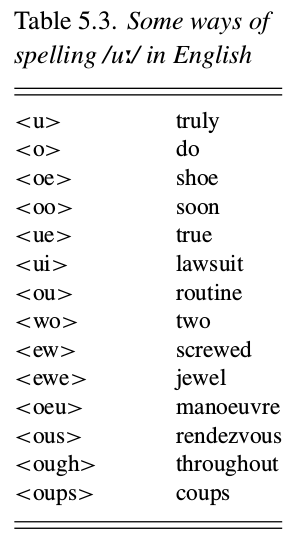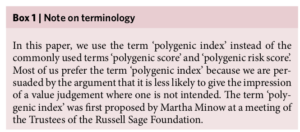https://www.goodreads.com/book/show/16641082-writing-systems
http://libgen.org/search.php?req=coulmas+writing&open=0&view=simple&phrase=1&column=def
I read this book as part of background reading for my bachelor (which im writing here) after seeing it referred to in a few other books. As a textbook it seems fine, except for the chapter dealing with psycholinguistics. Nearly all the references in this section are clearly dated, and the author is not up to speed.
Some quotes and comments.
Over time, the gap between spelling and pronunciation is bound to widen
in alphabetic orthographies, as spoken forms change and written forms are retained.
Many of the so-called ‘silent’ letters in French can be explained in this way. Catach
(1978: 65) states that 12.83 per cent of letters are mute letters in French, that is,
letters that have no phonetic interpretation whatever.
Imagine how much money and time has been spent on typing silent letters. Several hundred years of typing 13% more letters than necessary. 13% more paper use. Remember when books were actually expensive.
A neat little overview. English is probably unique in this degree of linguistic insanity.
Perhaps that’s where the name of the danish letter J comes from (jʌð). I always wondered.
We are like sailors who must rebuild their boat on the open sea without ever
being able to take it apart in a dock and reassemble it from scratch. -Otto Neurath
I have seen this one before, but i couldnt verify it via Wikiquote while writing this (on laptop).
The conflicting views about the role of phonological recoding in flu-
ent reading are mirrored in a long-standing controversy that pervades reading
teaching methods. On one hand, the phonics and decoding method views read-
ing as a process that converts written forms of language to speech forms and
then to meaning. A teaching method, consequently, should emphasize phonolog-
ical knowledge. As one leading proponent of the phonics/decoding approach puts
it, ‘phonological skills are not merely concomitants or by-products of reading
ability; they are true antecedents that may account for up to 60 per cent of the
variance in children’s reading ability’ (Mann 1991: 130). On the other hand, the
whole-word method sees reading as a form of communication that consists of the
reception of information through the written form, the recovery of meaning being
the essential purpose. ‘Since it is the case that learning to recognize whole words
is necessary to be a fluent reader, therefore, the learning of whole words right
from the start may be easier and more effective’ (Steinberg, Nagata and Aline
2001: 97).
This sounds like another case of social scientists identifying g without realizing it. Phonological awareness surely correlates with g.
http://onlinelibrary.wiley.com/doi/10.1002/(SICI)1099-0909(199806)4:2%3C73::AID-DYS104%3E3.0.CO;2-%23/abstract
This study shows that a factor analysis of 4 WAIS subtests + a phonological awareness test. PA had a loading on g of .61.
See also: http://psycnet.apa.org/journals/psp/86/1/174/ and http://www.sciencedirect.com/science/article/pii/S0160289697900167
Although a general correlation between literacy rate and prosperity can be ob-
served, relatively poor countries with high literacy rates, such as Vietnam and Sri Lanka, and very rich countries with residual illiteracy, such as the United States, do exist.
This pattern is easily explainable if one knows that the national g of Vietnam and Sri Lanka is around world average, while the US is much higher. The high illiteracy rate of the US is becus of their minority populations of hispanics and african americans.


